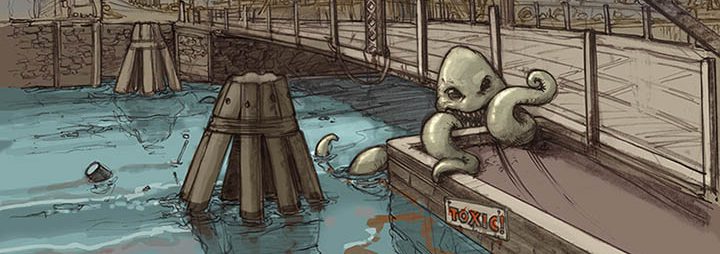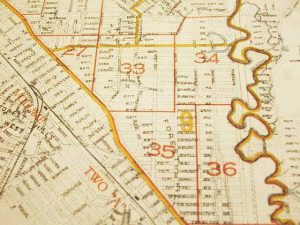Author Archives: Andrew Alleyne
NYPL ARCHIVE VISIT
JaneJacobs_Andrew_Alleyne_Blog4
Jane Jacobs vs Robert Moses: Urban Fight of the Century
Citizen Jane: Battle by for the city by Matt Tyrnauer focuses on the challenges faced by inconsiderable urban planning. The film highlights the villainous proposal by Robert Moses, an urban planner, to construct a new highway that would run down Broome Street. It also highlights the efforts by Jane Jacobs who opposed the new expressway in her community. As an activist and a resident of the West Village, she realized the need for social integration and not highways. In realizing the hostile effects of automobile expressways, she organized rallies and protest in her community. Ms. Jacobs dedication towards preserving the neighborhood resulted in her being accused of starting a riot at a public hearing about the LOMEX. It was then that many people took notice of her efforts and how far she was willing to go. With a huge following, she utilized every possible avenue and outlet available and could eradicate the heinous idea.
Throughout the movie, I couldn’t help but relate it to David and Goliath. Robert Moses certainly took on the figure of the Goliath through the documentary. He had influence and could construct the Bronx expressway which has been blamed for bisecting the area into two parts, upper class, and middle class. His approach towards the Lower Manhattan Expressway was one of a top-down tactic without concern for neighborhoods and their way of life. Jane Jacobs, on the other hand, was the opposite of Robert Moses. She was the David to his Goliath. Ms. Jacobs lived amongst the people on the ground, more specifically Greenwich village, which is situated in lower Manhattan. She published her book, The Death, and Life of Great American Cities, which was thought-provoking as it focused on the narrow-sightedness of urban planning. Her approach to urban planning involved removing the top down closed-door approach and involving the people of the community to aid in the future of their neighborhoods.
The documentary presented a new light and appreciation for thoughtful city planning. Jane Jacobs efforts seem to have at least a passive effect on modern developers. It is tough to see past plans which show the highway bisecting Manhattan. One can only imagine the level of disconnect neighborhoods would feel from such an inconsiderable expressway.
Alleyne_Andrew_10_10_2017_ArchiveVisit
Alleyne_Andrew_2017_05_SiteReport2
My Brooklyn Alleyne_Andrew_26_17
The film, My Brooklyn by Kelly Anderson exhibits the thriving proof of gentrification at its finest in her home borough, Brooklyn. Throughout the documentary, the director gathers many different perspectives from the people both living in the neighborhood, residential groups, local businesses and politicians that are responsible for developing their zone.
The director’s study of her neighborhood began when she noticed the steady decrease of diversity in her area, Park Slope. It was then that she began to evaluate the various forces that combine to develop a city’s character. Ms. Andersons film focused partially on the well-known Fulton Street Mall “revitalization”. For many years, its stores have been keen to serving its neighboring communities, Afro-Caribbean and African American folk. Through observing the shifting tides based on “redevelopment”, Ms. Anderson began to dig deeper.
Her study proved to find many relations between Mayor Bloomberg and many of the developers who belong to the Downtown Brooklyn Partnership. Their plans for the Downtown area were described to many as,” New Brooklyn” with added luxury apartments and stores. In doing so, the Downtown Brooklyn Partnership and its cohorts began to displace many businesses and residents without any consideration for their well-being.
My reaction to the topics raised in the film was perplexing. It was clear as day that gentrification was happening. In essence, if I were to put it in simpler terms, displacement of a community, friendships and livelihood were occurring behind people’s back. Gentrification of a neighborhood weighs heavy on the hearts of many communities. The feeling of being a part of a community and then being kicked to the curb is hard-hitting for many. Each side of the street believes that they are doing good by its people. I truly believe that the process of redevelopment can be handled in a better manner. Its imposers should be in constant contact with the community and adjust slightly to the communities and their standard of living.
Timeline of change. – Andrew_Alleyne_2017_19
The topics presented by Mr. Alexiou throughout his presentation on the Gowanus Canal convey vital material adding to previous knowledge gained by research and reading his book, “Gowanus”. During his presentation, Mr. Alexiou touched on many subjects that relate to Brooklyn’s development as it correlated with the Canals transformation. Some of these topics ranged from plans of real estate development, the First Maryland Regiment (Smallwood’s Regiment) and Superfund versus the City Of New York, more specifically former Mayor De Blasio. Canal’s timeline as one that regularly caught many futurists with its potential to become a trade hub. The topic that caught my interest the most was the transformation of the Canal, the effects of business and how the urbanization of the surroundings of the canal has affected its shape over the years. Throughout my paper, I will touch briefly on each historical moment that has contributed to the Canals current state.
Mr. Alexiou described the Gowanus Canal’s historical timeline as one that reflects development without proper policies or guidance. After gaining its name from the local tribe of Native American Canarese’s, the Canal later was purchased by the Dutch who considered the creeks environment fit for farming oysters resulting in the Canal becoming lucrative. While farming was becoming big in the areas surrounding New York the need for docking facilities grew increasing interest of the creek, which eventually turned in a Canal. In the late 1860s, the Canal began to flourish as many factories and residential communities began to pop up along it. Some of these factories included coal gas manufacturing plants, oil refineries, machines shops, soap makers and chemical plants. The Canals industrial and residential growth then grew rapidly piloting, even more, development in areas around it. These areas include the neighborhood of South Brooklyn which encompasses, Carroll Gardens, Cobble Hill, Boerum Hill, Park Slope, Red Hook and Gowanus. The growth of these areas facilitated the need for sewage which then was routed into the Canal. Combining the lack of environmental policies in the early to late 1860, the Canal was subject to pollutants from runoff water, sewage overflow and the many refineries located alongside the canal. It is now known as one of the most polluted areas in Brooklyn and garnered the attention of many environmentalist agencies that have put programs in place to give life back to what started as wildlife marshland.
My feedback to the Gowanus’s timeline is one of utter shock and disbelief. It is described as a place throughout the presentation as a habitat for wildlife and rich for farming. But due to growth, pollution the area lost its potential yield produce. The influence of businesses and community turned a once fertile land and booming creek into an area of pollution and lifeless murky bacteria-infested waters. The canal has been a subject of pollution for quite some time since its development in the 1860 and is in the spotlight today for treatment by the Environmental Protection Agency. They plan to use the EPAs Superfund model which requires them to seek finances from different parties who are connected and responsible for contributing towards the pollution of the Canal. I am for the Superfund model as it imposes companies to mandatorily pay towards the cleaning efforts of the Canal. This model will pilot the efforts to remove the thick toxic sediment which sits 10 feet high below the Canals waters. The timeline of the Gowanus can serve to many different cities or countries on how to better develop policies to ensure that the environment is protected from tragedies like this one.
Gowanus Canal Site Report #1
Queens Village
QUEENS VILLAGE
At present I live in Queens Village on 208th street. My neighborhood can be described as a mix of urban and suburban. My family and I recently moved to the eastern part of Queens to escape the busy lifestyle that is Brooklyn. I have been living here approximately 3 years now and have witnessed major changes to my neighborhood. Many factors come into play depending on the area in which you live in. Some of these changes mostly deal with modes of transportation, labeling of streets, community atmosphere, shopping centers and diversity.
First, in my area transportation is nearly non-existent except for the tardy Q2 buses and posh Amtrak trains that run periodically. There aren’t any subways or frequent cabs to use if one mode of transportation isn’t available. The nearest subway which is the, F train, is located on 179th street Hillside Avenue, which according to Google Maps is approximately 11 minutes by car and 20-25 minutes by bus on a good day. This commute time doesn’t consist of the train ride to the city and beyond. As of last winter, my commute to the campus were upwards of an hour and a half. Because of the low modes of transportation combined with distance, my community including myself have mostly turned to private commute.
Second, the Queens borough street grid is very confusing. Many of the streets are labelled exactly like this, 52 Ave followed by 52nd Road, 52 Drive and 52nd Court which makes piloting through neighborhoods a task. It took me nearly 3 years to realize that Avenues go east- west and streets the opposite. Trying navigate to house/ building numbers such as my nearest Home Depot (92-30 168th St, Queens, NY 11433) will leave an outsider lost.
Third, the atmosphere in my area is relatively quiets granted it isn’t a public holiday. There are the usual hooligans that drive past with blaring music, but other than that it is quiet. Throughout the summer many of the kids are home but remain indoors. I am not certain why they do as there is a playground 10 minutes away. Many of the homes in my area are of Ranch, Tudor or Colonial style. I am a big fan of the design of these houses as they seem to complement each other’s design. They bring character to the neighborhood.
Fourth, my neighborhood doesn’t have many big-name name stores in the near distance. There is a corner store 2 minutes away combined with a few local stores. A little higher, 10 minutes away are Walgreens, Domino’s,Dunkin Donuts and the church amass for an entire block. If I wanted to buy something other than what is offered at the local stores I would have to travel to Jamaica Avenue which isn’t that far.
Finally, I live in a very diverse neighborhood which encompasses Caribbean Americans, Guyanese, Hispanic, Indian, and Jamaicans. There are few Jewish neighborhood that I know off but recently they’ve been slowly disappearing. Over the last year, I have also noticed the rise in Asian American residents in my neighborhood. I love diversity as it brings culture and shape to the neighborhood. You get to experience culture at your doorstep may it be Asian, Jamaican or Indian.
In conclusion, Queens Village is a wonderful place to stay if you value quietness, privacy and diversity. However, lack of different public transportation methods make it difficult to commute and along with the far reach of stores such as, Costco or Walmart.
References
[1]“Cities 101: How to Navigate Queens’ Street Grid.” Untapped Cities, 4 Apr. 2014, untappedcities.com/2014/04/03/cities-101-how-to-navigate-queens-street-grid/.




